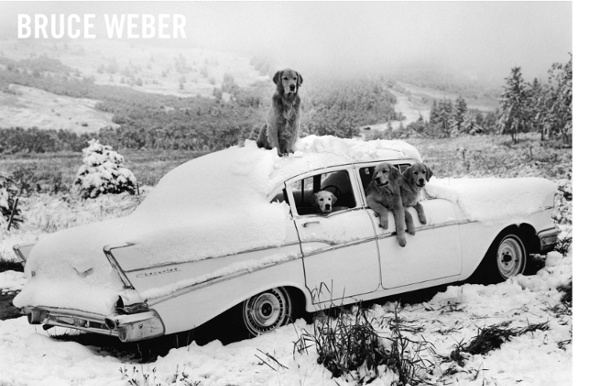



kafa.fi - Valokuvaus Kai Fagerström Kim Høltermand Matt Irwin Georgia May Jagger Joins Jerry Hall for Sunglass Hut Mother’s Day Campaign A Family Affair - Top model Georgia May Jagger teams up with her famous mom Jerry Hall for the new Mother's... Continue Lady Gaga by Matt Irwin for Elle UK January 2012 (Cover) Lady Gaga puts on a mask for both the subscribor's (above) and newsstand (below) covers of January's Elle UK. Continue Vogue Turkey December 2011 Cover | Jacquelyn Jablonski by Matt Irwin Jacquelyn Jablonski nabs her first Vogue cover with the December issue of Vogue Turkey. Continue Ponystep #2 F/W 2011 Covers | Donatella Versace, Elvira & Dame Edna In Step - Not one for traditional covers, the second issue of Ponystep features designer Donatella Versace, '80s icon Elvira... Continue Lily Donaldson by Matt Irwin for Muse #26 Summer 2011 Hello Sunshine - Lily Donaldson is a summer bombshell in these colorful photos for Muse Magazine by Matt Irwin. Continue Muse Summer 2011 Cover | Lily Donaldson by Matt Irwin Continue 1. Continue Continue Continue 12Next
1918 ArtSPACE - Shanghai, China - Contemporary Art and Photograp Sea Chant Man Ray Eric Guillemain The Beach: Zuzanna Bijoch Poses for Centrefold by Eric Guillemain The Beach--Polish model Zuzanna Bijoch hits the beach for her latest work featured in Centrefold Magazine. The brunette beauty strikes some... Continue Abbie Cornish Keeps it Low-Key for Eric Guillemain in L’Uomo Vogue Abbie Goes Understated--Actress Abbie Cornish may be known for her bombshell looks, but for the latest issue of L'Uomo Vogue, the... Continue Soko Dons Boyish Chic Style for Eric Guillemain in L’Uomo Vogue Independent Mind--French singer Soko graces the pages of the latest L'Uomo Vogue, looking effortlessly chic in boyish looks styled by Djuna... Continue Alessandra Ambrosio is a Cali Girl for S Moda Shoot by Eric Guillemain California Has an Angel--Modeling on the beaches of Southern California, Victoria's Secret Angel Alessandra Ambrosio appears in the February 22nd issue... Continue Melanie Laurent Poses for Eric Guillemain in S Moda Spread Continue Sara Blomqvist Models Madewell, Shot by Eric Guillemain Continue
JONATHAN LEVINE GALLERY Formerly operating as Tin Man Alley Gallery in Philadelphia and New Hope, PA, the Jonathan LeVine Gallery moved to New York in January 2005 and opened with a group exhibition, "Pop Pluralism" on February 5th. During its four years in Pennsylvania, Tin Man Alley was the area's epicenter for underground, outsider and cutting edge art. Proprietor and curator Jonathan LeVine now brings his formidable art background, fresh approach and discerning eye for both established and breaking artists to Chelsea. Believing that underground art is a culture that defies simple characterization, LeVine exhibits a variety of celebrated, controversial, and unknown artists. Exhibitions rotate approximately every six weeks. Please come by and visit the Jonathan LeVine Gallery at 529 W. 20th Street, 9th Floor.